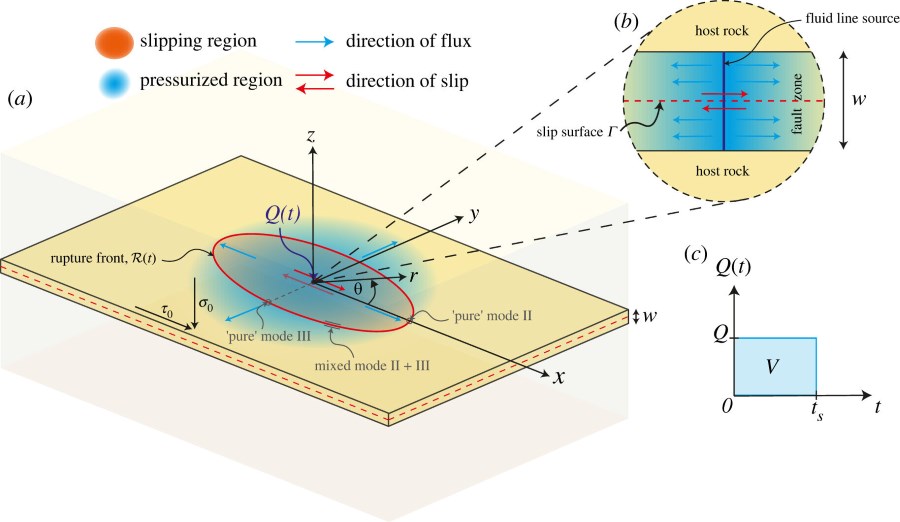Geothermal energy is a renewable energy source that can be used to generate electricity and heat homes and businesses. However, the extraction of geothermal energy can sometimes lead to seismic activity. This is known as geothermal-technology-induced seismicity.
A team of scientists from the Swiss Federal Institute of Technology (EPFL) has developed a model that can help to predict the risk of seismicity associated with geothermal energy extraction.
The model takes into account the properties of the rocks and fluids involved, as well as the injection pressure and rate. In order to support the shift to a carbon-free economy, energy producers are eager to find safe ways to extract geothermal energy from deep underground.

Source: Proceedings of the Royal Society A
Brice Lecampion, an associate professor at EPFL and the head of the Laboratory of Geo-energy (GEL), is contributing to these efforts. His research group is developing models to describe the behaviour of the subsurface, with a specific focus on the consequences of subsurface fluid injections.
The models developed by Lecampion's research group can help to predict the risk of seismicity associated with geothermal energy extraction. This information can be used to help engineers design and operate geothermal projects in a way that minimizes the risk of earthquakes.
This groundbreaking research holds significant importance because when water is injected underground, it heats up and rises to the surface. This hot water can be used to generate electricity or heat buildings.
However, underground water injection can also lead to seismic activity. This is because the injection of water can change the stress field in the rocks, which can trigger earthquakes.
Deep geothermal wells typically run 4-6 kilometres below the surface. At this depth, the rock is impermeable, meaning that water cannot flow through it naturally. In order to extract geothermal energy from these wells, engineers must artificially create fractures in the rock or stimulate existing fractures to increase their permeability.
This is done through a process known as hydraulic stimulation. In 2006, a pilot project to extract geothermal energy from a deep well in Basel, Switzerland, led to a magnitude 3 earthquake.
The earthquake caused damage to buildings and infrastructure, and the project was abandoned.
Alexis Sáez, a PhD student at GEL and a co-author of the study, explains, "We looked particularly at earthquakes that occur between a few days and a few months after the end of fluid injection. Our research sheds light on a new physical mechanism that can trigger these delayed earthquakes."
Alexis and Lecampion developed a 3D model that can be used to analyse the interactions between fluids and fractures in rocks.
Sáez mentioned: "Our model gives engineers guidance and new calculation methods that can be integrated into more general strategies to mitigate the seismic risk associated with these operations."
"For now, it's really hard to predict the occurrence of injection-induced earthquakes—engineers rely mostly on statistical approaches, similar to what they do for natural earthquakes.”
“Our research provides a better understanding of the physical forces at work. This is a step forward in the implementation of physics-based approaches to manage the inherent seismic risk of these operations and to ultimately unlock the vast potential of geothermal energy to facilitate the decarbonization of our energy system," he added.
In conclusion, Geothermal energy is a promising renewable energy source, but it is important to be aware of the risks associated with its extraction.
The research by EPFL scientists is a step forward in the understanding of geothermal-technology-induced seismicity, and it could help to make the extraction of geothermal energy safer.
Source: Phys.org
Comments
All Comments (0)
Join the conversation